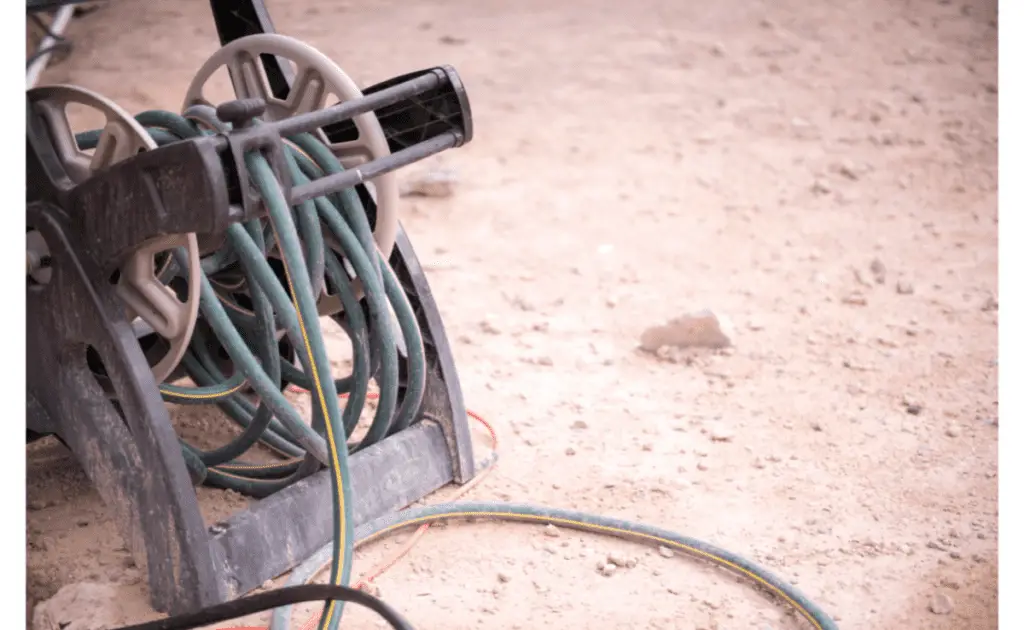
There are several types of garden hoses that vary in appearance and function. We offer a guide for looking after and maintaining your garden hose to ensure it remains fully functional and long lasting.
As a general rule garden hose care consist of three parts cleaning, storage and repair. A hose should always be wiped downed of soil and other debris as well as drained of any water before storing. Assess the hose for any damage before storing if the hose is in need of repair there are many cheap kits available online. Finally make sure to store the hose in a dry place to ensure the hose doesn’t freeze as this can cause damage.
Watering With A Garden Hose
When watering plants, shrubs and trees keep the spray nozzle around twelve inches from the plant and water for two to three minutes. Move the nozzle closer to the plant if you want to increase the water pressure.
If you’re using a garden hose with a spray nozzle to water your lawn, set the nozzle on high and move it back and forth across the lawn. Try not to let the hose sit in one spot for too long, as the water pressure will cause the soil to erode.
Cleaning A Garden Hose
Before storing a garden hose for the winter, it’s important to clean it properly. This can be done by running the hose with hot water and a little dish soap. Make sure to rinse off all of the soap before hanging the hose.
It’s also wise to store the hose indoors over the winter, as this will protect it from weather damage. If you’re unable to take your garden hose indoors for the winter, coil it up and drain it. Only leave the water in if you will be using it regularly.
How To Store Garden Hoses
-If you have a wall mount, hang the hose on the mount.
-If you have a cover for your spigot, coil the hose and place it in the cover.
-If you don’t have a wall mount or a cover for your spigot, coil the hose and place it in an old garbage can with a hole in the bottom. Put the garbage can next to the spigot.
-If you’re using a water timer, connect the hose to the timer and turn off the water at the valve.
A well-maintained garden hose can be used for many years. It’s always best to store the hose indoors when it’s not in use, especially during the winter months when water damage is most likely to occur.
Let your garden hose dry out before you coil it up and make sure to clean off any residue or dirt before you store it.
A garden hose reel is a good option for those who don’t want to coil up their garden hoses or put them away in garbage cans. This will keep the hose off of the ground and decrease the risk of water damage that can occur from exposure to dirt and debris.
Using Hose Reel for Garden Hose Maintenance
A garden hose reel is a good option for those who don’t want to coil up their garden hoses or put them away in garbage cans. This will keep the hose off of the ground and decrease the risk of water damage that can occur from exposure to dirt and debris.
Hose reels help the mobility of your hose. Caring for your hose means protecting it from environments. A hose reel or hose pot lets you move sprinkler for irrigation watering.
Make sure to keep the hose tight when reeling hose onto reel carts to avoid kinks. Some hose carts are covered with helps with maintenance by reducing the element exposure.
Good gardening practices can help you enjoy an easy, enjoyable, and successful gardening experience. Remember garden hose maintenance matters.
How To Fix A Leaking Garden Hose
-Turn off the water and disconnect the hose from the spigot.
-Find the leak and seal it with a garden hose repair kit.
-Repairing a leak in a garden hose is an easy process that can be done in minutes.
-Turn on the water at the valve and check for leaks by spraying water through your hose. If there are no leaks, slowly turn the water on in your hose.
-If you have a pressure regulator, test the hose by turning up the water pressure to its highest setting.
-Turn off the water when you’re done using your garden hose and open any valves to release any leftover pressure in the hose.
It’s best to leave excess water drained from your hose when you’re not using it.
If your garden hose starts to leak, the best thing you can do is repair it before any serious damage occurs. It’s important to always check for leaks in your garden hose and make all necessary repairs prior to use.
Several types of fittings and gaskets can be used to repair a leak in a garden hose Learn more at garden hose adapter guide. If you’re not sure how to fix the leak, there are many videos on the internet that will show you how to do it. Just be sure to have the necessary supplies on hand before you start repairing your hose.
Once your garden hose is repaired, it’s important to keep an eye on it for any new leaks. If you have a garden hose reel, it’s best to coil the hose up and place it on the reel. This will keep the hose off the ground and decrease the risk of water damage.
Turn off any valves that supply water to your hose and turn off the water at your main valve when you’re done using your garden hose.
To learn more about how the PSI of a hose effects leaking see our What is the PSI of a garden hose nozzle
How to water with a soaker hose
-Dig a trench 2 inches deep and lay your soaker hose in the trench.
-After you’ve placed your soaker hose, cover it with at least 1 inch of soil.
-Turn on your water source to allow water to flow through the hose. You will know that the hose is working when you see water coming out of the holes at the end of the soaker hose.
-A soaker hose is a great way to directly target water to your garden’s roots, meaning you will use less water than regular sprinklers. This makes them ideal for saving money on your water bill and conserving natural resources.
-The best time of day to water with a soaker hose is in the early evening after the sun has gone down because evaporation rates are lower. This will give your newly watered garden time to soak up as much water as possible before it evaporates.
-Replace soaker hoses every year or if they show signs of wear and tear.
Watering your garden with a soaker hose is a great way to conserve water and save money on your monthly water bill.
This post contains affiliate links. If you make a purchase through these links, we may receive compensation at no additional cost to you.
